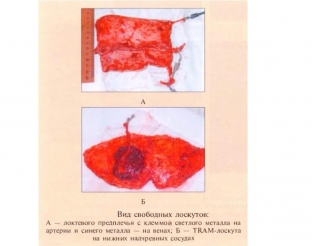In aesthetic surgery, doctors often face the need to close large skin wounds. This area of medicine is constantly working with age-related skin changes, where it is necessary to “cut off the excess” and “add the missing”. For many years, plastic surgeons have been trying to develop an effective technique for closing such defects, and today the best option is to close the wounds with grafts or pedunculated skin flaps. For beginners and practitioners for a long time, estet-portal.com offers a detailed description of the various types of skin flaps.
What types of pedunculated skin flaps are divided into
A pedunculated skin flap and a skin graft are two different concepts that patients often confuse. One of the tasks of a plastic surgeon at the stage of preoperative preparation is the planning of an operative intervention, as well as providing the patient with reliable information. It is important to explain that a graft is a completely detached piece of skin that is removed from the donor site and transferred to the wound. A skin flap on a leg is a section of the dermis and epidermis, which is attached to the donor site with the help of vessels and carefully transplanted to the defect area. Thus, normal nutrition of the transplanted flap is maintained for a long time.
Pedal skin flap:
- classification of pedunculated skin flaps according to their blood supply;
- main types of axial skin flaps;
- classification of pedunculated skin flaps depending on the nature of the movement.
Classification of pedunculated skin flaps according to their blood supply
According to the blood supply of the skin flaps on the leg, which are transplanted to the wound, they can be divided into two large groups:
- flaps with random blood supply - these include most pedunculated skin flaps. They receive blood supply in a certain way through segmental anastomic, axial and deep muscular arteries, musculocutaneous perforators and dermal-subdermal plexus. The thickness of such flaps can be reduced by removing subcutaneous fat to the level of the dermal-subdermal plexus, they can also be lengthened by forming a delayed flap. But it is important to note that the survival of flaps with random blood supply directly depends on the perfusion pressure in the vessels;
- flaps with axial blood supply are fed from direct skin vessels that arise from axial, anastomotic, or segmental arteries, often as perforators. In addition, a small area of them is supplied with blood due to the dermal-subdermal plexus. The length of such flaps depends on the length of the arteries included in them. Axial flow flaps consist of a proximal arterial pedicle and a distal dermal portion.
Main types of axial skin flaps
All axial skin flaps on the pedicle, depending on the characteristics of their blood supply, are divided into the following types of flaps:
- Peninsular flaps - such flaps have a straight artery and vein, as well as a small area of skin and subcutaneous fat at the base;
- islet flaps are connected to their base by direct arteries and veins, but do not have a kind of “bridge” of tissues. In modern practice, peninsular flaps are often transferred to islet flaps, as this allows the flap to be made more flexible and mobile;
- pedunculated free skin flaps have advantages over other types of axial flaps, as they allow free grafting, as well as reduce the time of immobilization and hospitalization of the patient.

Classification of pedunculated skin flaps depending on the nature of movement
Today, there are several main classifications of pedunculated skin flaps. Depending on the nature of the movement of the flaps, they are divided as follows:
- local skin flaps - such flaps are formed from tissues that are located in close proximity to the wound that needs to be closed. When using such flaps, their color, thickness, hairiness and texture will match the skin of the recipient area. Such flaps may be rotated around the pivot point or retractable on one or two vascular pedicles;
- skin flaps from distant sites are formed in remote areas of the body and transferred to the wound area directly, that is, from the donor zone to the recipient zone, or indirectly - from the donor zone first to the intermediate zone, and then to the wound area.






Add a comment